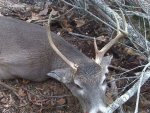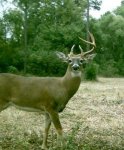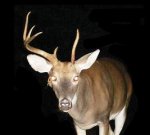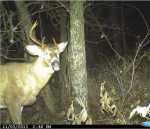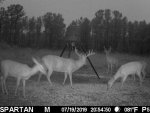BlackEagle2
Banned
Heres my take.....and my opinion.
I see it every year on here and just recently today I watched a video on this Forum of a guy saying he was gonna shoot a "cull buck" later in the year if he walked back by. The deer had one perfect side and a dinky looking spike on the other. But was it a "cull buck"?
Absolutely not.
Cull bucks exist....but have normal racks. They're just inferior at maturity.
I got to spend about 4 years doing taxidermy and have also had some great conversations with the biologist at the UGA Whitetail Facility right down the road from me. The 4 years I spent doing taxidermy I skinned out somewhere around 300 mature whitetail deer skulls. Most of the oddball racked bucks had pretty defined pedicle injuries or some times the hunter would even say "he was limping" or "we found where somewhere shot him last year" which can easily lead to antler deformation.
I would go out on a limb here and say that about 80% of the "cull bucks" or deformed antler deer (one nice side and a spike on the other) are simply due to pedicle injuries. Yes, 80%. Mainly occurring more frequent in larger older deer that fight more and are more prone to head injuries.
The other 20% I would say is a mix of bad luck during the velvet phase and/or major injuries on the body.
Genetics are whole body. You can not say a deer has bad genetics because of one lousy spike on his left side and a full, perfect right side. Its not possible.
You are not doing yourself favor by shooting a buck like I have pictured below. You simply have removed a deer from your herd that has 100% perfectly fine genetics. Instead, you let a simple injury to the pedicle fool you and now you're out some great genes a few years down the road.
If you have any sheds laying around take a look at them. The biologist at UGA described it best. A "dirty shed" simply sheds off more pedicle that it should have cause an injury to the area and CAN LIKELY cause a spike like effect the next growing season. In my opinion this is way less likely but still possible. I think any buck fighting into January is most likely to receive this type of injury.
No one wants to see GA grow bigger and bigger deer every year more than me and this is just another way to help us get there. It is nearly IMPOSSIBLE to remove bad genetics from a free ranging deer herd yet every hunter that sees a fully developed right antler and spike left antler kill them thinking they are helping when in fact.....they are doing more damage.
If they are not a trophy to you because of a deformity to one or the other side, then let them live and pass on some fine genetics. That's the best option.
I see it every year on here and just recently today I watched a video on this Forum of a guy saying he was gonna shoot a "cull buck" later in the year if he walked back by. The deer had one perfect side and a dinky looking spike on the other. But was it a "cull buck"?
Absolutely not.
Cull bucks exist....but have normal racks. They're just inferior at maturity.
I got to spend about 4 years doing taxidermy and have also had some great conversations with the biologist at the UGA Whitetail Facility right down the road from me. The 4 years I spent doing taxidermy I skinned out somewhere around 300 mature whitetail deer skulls. Most of the oddball racked bucks had pretty defined pedicle injuries or some times the hunter would even say "he was limping" or "we found where somewhere shot him last year" which can easily lead to antler deformation.
I would go out on a limb here and say that about 80% of the "cull bucks" or deformed antler deer (one nice side and a spike on the other) are simply due to pedicle injuries. Yes, 80%. Mainly occurring more frequent in larger older deer that fight more and are more prone to head injuries.
The other 20% I would say is a mix of bad luck during the velvet phase and/or major injuries on the body.
Genetics are whole body. You can not say a deer has bad genetics because of one lousy spike on his left side and a full, perfect right side. Its not possible.
You are not doing yourself favor by shooting a buck like I have pictured below. You simply have removed a deer from your herd that has 100% perfectly fine genetics. Instead, you let a simple injury to the pedicle fool you and now you're out some great genes a few years down the road.
If you have any sheds laying around take a look at them. The biologist at UGA described it best. A "dirty shed" simply sheds off more pedicle that it should have cause an injury to the area and CAN LIKELY cause a spike like effect the next growing season. In my opinion this is way less likely but still possible. I think any buck fighting into January is most likely to receive this type of injury.
No one wants to see GA grow bigger and bigger deer every year more than me and this is just another way to help us get there. It is nearly IMPOSSIBLE to remove bad genetics from a free ranging deer herd yet every hunter that sees a fully developed right antler and spike left antler kill them thinking they are helping when in fact.....they are doing more damage.
If they are not a trophy to you because of a deformity to one or the other side, then let them live and pass on some fine genetics. That's the best option.

